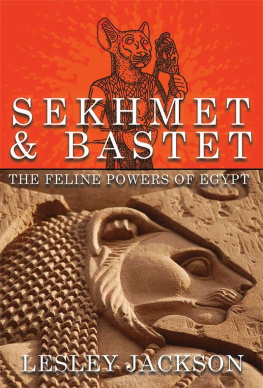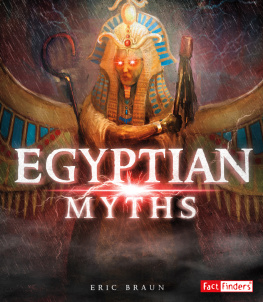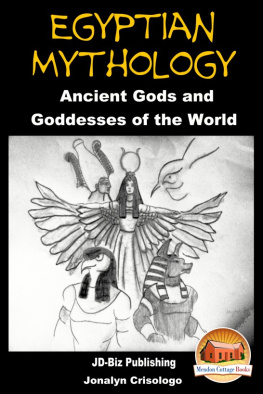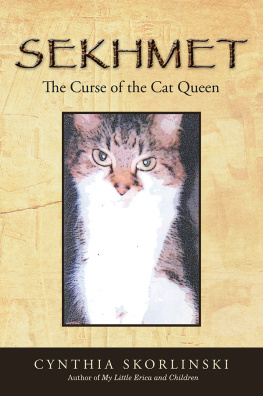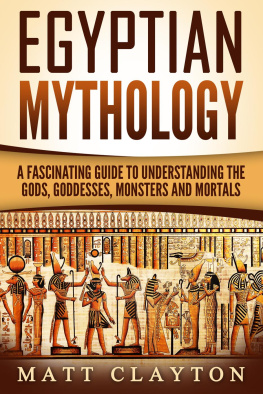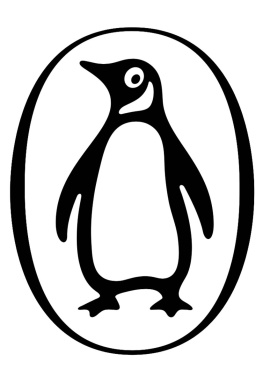SEKHMET & BASTET
THE FELINE POWERS OF EGYPT
LESLEY JACKSON

Published by Avalonia
www.avaloniabooks.co.uk
Published by Avalonia
BM Avalonia, London, WC1N 3XX, England, UK
www.avaloniabooks.co.uk
SEKHMET AND BASTET: The Feline Powers of Egypt
Lesley Jackson, 2017
All rights reserved.
First Published by Avalonia, March 2018
This Kindle edition, May 2018
Typeset and design by Satori
Cover design by Satori.
Illustrations by Brian Andrews, 2017
British Library Cataloguing in Publication Data. A catalogue record for this book is available from the British Library.
This book is sold subject to the condition that no part of it may be reproduced or utilized in any form or by any means, electronic or mechanical, including photocopying, microfilm, recording, or by any information storage and retrieval system, or used in another book, without written permission from the author.
DEDICATION
This book is dedicated to Sekhmet, the Lady of the Original Power,
to Bastet, the Goddess Great of Festivity,
and to my late brother Julian.
Biography
Lesley Jackson has always had an interest in, and a yearning for, the mysterious geographical; be it lost worlds, otherworlds or the sacred places of this world. A career in IT was merely a logical faade. Many years of involvement in the local archaeological society deepened her interest in ancient cultures and their religions.
Since being blessed with early retirement, Lesley has devoted much of her time to researching and writing about early religion and mythology. Ancient Egypt is an enduring passion, but other paths are always beckoning from around the misty hills. She is the author of Thoth: The History of the Ancient Egyptian God of Wisdom (Avalonia, 2011), Hathor: A Reintroduction to an Ancient Egyptian Goddess (Avalonia, 2013) and Isis: The Eternal Goddess of Egypt and Rome (Avalonia, 2016).
She lives in the remote East Riding with a tolerant husband and an ever-increasing volume of books and rocks. Any remaining spare time is spent travelling or baking and making chocolates.
Acknowledgements
No study of Egyptian religion would be possible without access to their writings. I am indebted to all of those who have studied these ancient languages and have provided translations for the rest of us to use.
I would like to thank the British Library, and the Egyptian Exploration Society and the University of Hull for the use of their libraries.

TABLE OF CONTENTS

Chapter 1
Introduction
Her majesty came down as the potent and prospering Eye to join the world through her to the Spirit of God. At peace, to dwell in Isheru in her form of Sakhmet, Mistress of the Two Lands.
Sekhmet and Bastet are well known and popular Goddesses today, and much of their appeal lies in their feline iconography and characters. They, and the other less well known Feline Goddesses, are inseparable from the concept of the Solar Eye Goddess who is the visible solar disc and the Daughter of the Sun God. This fuels both their character and their strong duality. But there are other major Goddesses, Hathor and Mut, who are Solar Eye Goddesses without feline characteristics despite having one of the Feline Goddesses as an alter ego.
It has proved difficult to study Sekhmet and Bastet in isolation. They may stand dominant but feline power spreads across Egypt like the rays of the rising sun. So I have included all aspects of feline power in this book whilst trying to answer the main questions that the feline deities pose. Why is there such a predominance of Goddesses? Why are they so interchangeable in the myths and are frequently angry or benevolent forms of each other? Finally, what about the Feline Gods of Egypt? Why arent they particularly feline in character and why dont they dominate given the importance of the lion as a symbol of the king? I have excluded the sphinx despite its feline association as it really is a topic in its own right.

Chapter 2
The Importance of Felines
When they wish to symbolise spiritedness, they draw a lionit has fiery eyesits mane radiates from about it, in imitation of the sun.
Animals and the Egyptians
The natural world and especially the animals in it were very important to the Egyptians. All ancient societies had a much closer link to the natural world than we do if only through the fact that they were predominantly rural societies, but for the Egyptians, animals were an integral part of all aspects of their lives. Over 20 percent of hieroglyphs are connected with animals, and they form a significant part of Egyptian iconography.
The Egyptians were very much aware of the natural world around them. Many animals became significant because they had some feature, such as fertility or hunting skills, which was admired. This power manifested more in the specific animal than in people. Being generalists, we can do what most animals can but not as skilfully. Because of this animals were seen as a link to the various deities and emblematic of their powers. The desert was seen as the refuge of wild animals compared to the civilised cultivated land. Wild animals represented the dangerous forces of chaos which could only be pacified or controlled through sacred rites and royal intervention. Felines are one of the most iconic of Egyptian symbolic animals. Their major areas of symbolism are listed below and will be dealt with in depth in the relevant chapters.
The Family Felidae
The feline family is divided into Panthera which contains the big cats (lion, leopard and so forth) and Felinae which contains all others. Felines are the most specialist of the carnivores and are exclusively meat eaters. They are adept at prowling and stalking and their speciality is hunting at night. The vast majority of the species are solitary. Unfortunately all species are classed as vulnerable by the IUCN.
The Natural History of Lions
The lion, Panthera leo , is the largest African feline and originally there were a number of different species. They were widespread in Europe, the Near East, South West Asia and all of Africa. The Egyptians will have encountered species from North Africa (the Barbary lion) and the Near East (the Asiatic lion) as well as the African lion. Today these species are mostly eradicated with only the African lion remaining in the wild and confined to sub-Saharan Africa. Hunting, disease and loss of habitat and prey caused their decline with hunting rising to obscene levels with well-armed trophy hunters.
It is thought that lions were originally quite abundant in Egypt in the semi-desert areas to the east and west of the Nile and in Sinai. They appear to have drifted south during the Pre-dynastic Period as a result of climate change and increasing human population density and were uncommon during the Pharaonic Period. There may have been a small population still surviving in Egypt during the Ptolemaic Period but it isnt known when they became locally extinct. Tomb chapels in the Old and Middle Kingdoms frequently depict lions hunting in the desert, but that doesnt mean that they were commonly seen rather that they were a popular motif through their symbolism.

